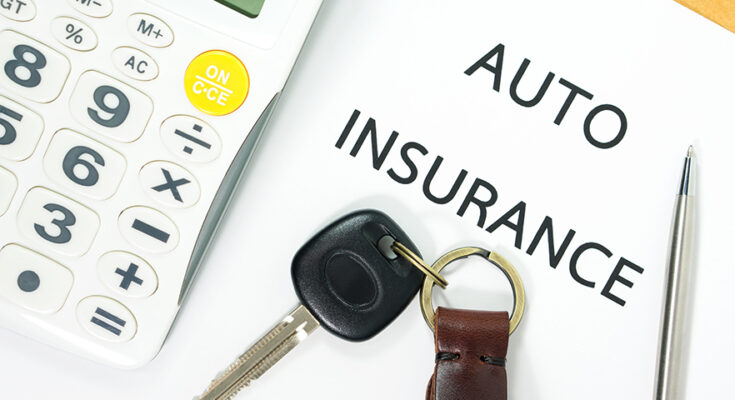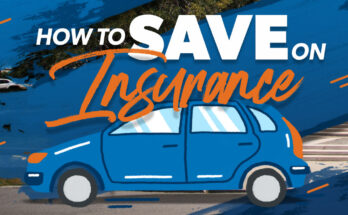When shopping for auto insurance, one term you’ll frequently encounter is “full coverage.” It’s often thrown around by insurance agents, advertisements, and even friends, but what does it actually mean? Many drivers assume full coverage auto insurance offers blanket protection for any and all scenarios, but the reality is more nuanced. In this article, we’ll demystify the concept of full coverage, break down its components, explore what it does and doesn’t cover, and help you decide if it’s the right choice for your needs.
Understanding the Basics of Full Coverage
Full coverage auto insurance isn’t a single policy or a standardized product. Instead, it’s a term used to describe a combination of insurance coverages that provide a higher level of protection than the minimum required by law. While the specifics can vary by insurer and state, full coverage typically includes three core components: liability insurance, collision coverage, and comprehensive coverage. Together, these coverages address a wide range of risks, from accidents you cause to damage to your own vehicle.
However, “full coverage” is a bit of a misnomer. It doesn’t cover every possible scenario, and there are still situations where you could face out-of-pocket expenses. To understand why, let’s dive into each component and explore additional coverages that are often bundled with or added to a full coverage policy.
The Core Components of Full Coverage
1. Liability Insurance
Liability insurance is the foundation of any auto insurance policy and is required in nearly every state in the U.S. It covers damages and injuries you cause to others in an accident where you’re at fault. Liability insurance is split into two parts:
- Bodily Injury Liability (BI): This pays for medical expenses, lost wages, and other costs for injuries sustained by other people in an accident you caused. For example, if you rear-end another car and the driver suffers a broken arm, BI would cover their medical bills.
- Property Damage Liability (PD): This covers damage to someone else’s property, such as their vehicle, a fence, or a mailbox, caused by an accident you’re responsible for.
Liability limits are typically expressed as three numbers, such as 25/50/25. This means $25,000 per person for bodily injury, $50,000 per accident for bodily injury, and $25,000 per accident for property damage. Full coverage policies often include higher liability limits than state minimums to provide better financial protection.
However, liability insurance only covers damages to others. It doesn’t cover repairs to your own vehicle or your medical expenses, which is where the other components of full coverage come in.
2. Collision Coverage
Collision coverage pays for repairs or replacement of your vehicle if it’s damaged in a collision with another vehicle or object, regardless of who’s at fault. For example, if you hit a tree or another car, collision coverage would help cover the cost of fixing or replacing your car, minus your deductible (the amount you pay out of pocket before insurance kicks in).
This coverage is particularly valuable if you have a newer or more expensive vehicle, as repair costs can quickly add up. However, if your car is older and has a low market value, you might decide collision coverage isn’t worth the premium, as the payout may not exceed the cost of the policy.
3. Comprehensive Coverage
Comprehensive coverage protects your vehicle from non-collision-related incidents, such as theft, vandalism, natural disasters, or hitting an animal. For instance, if a hailstorm dents your car or a thief steals it, comprehensive coverage would cover the repairs or replacement, again minus your deductible.
Comprehensive coverage is often required by lenders if you’re financing or leasing a vehicle, as it protects their investment in your car. Like collision coverage, its value depends on your car’s worth and your financial ability to absorb losses without insurance.
Optional Coverages Often Included in Full Coverage
While liability, collision, and comprehensive are the pillars of full coverage, many insurers bundle additional coverages or offer them as optional add-ons to create a more robust policy. These may include:

- Uninsured/Underinsured Motorist Coverage (UM/UIM): This protects you if you’re hit by a driver who has no insurance or insufficient coverage to pay for your damages or injuries. Given that millions of drivers in the U.S. are uninsured, this coverage can be a lifesaver.
- Medical Payments (MedPay) or Personal Injury Protection (PIP): These cover medical expenses for you and your passengers, regardless of fault. PIP, required in no-fault states like Florida, also covers lost wages and other costs.
- Roadside Assistance: This provides help for breakdowns, such as towing, flat tire changes, or fuel delivery.
- Rental Car Reimbursement: If your car is in the shop after a covered claim, this pays for a rental car so you can stay mobile.
- Gap Insurance: If you owe more on your car loan than the vehicle is worth, gap insurance covers the difference if your car is totaled.
These add-ons can enhance your policy but also increase your premium. When considering full coverage, evaluate which extras align with your needs and budget.
What Full Coverage Doesn’t Cover
Despite its name, full coverage has limitations. Here are some common scenarios it typically doesn’t cover:
- Personal Belongings in Your Car: If your laptop or golf clubs are stolen from your car, your auto insurance won’t cover them. You’d need to file a claim under your homeowners or renters insurance.
- Mechanical Repairs: Full coverage doesn’t pay for routine maintenance or mechanical failures, like a broken transmission or worn-out brakes.
- Intentional Damage: If you deliberately damage your vehicle, your claim will be denied.
- High-Value Claims Beyond Policy Limits: If damages exceed your policy’s limits, you’re responsible for the difference. For example, if you cause a multi-car pileup with $100,000 in damages but your property damage limit is $50,000, you’d owe the remaining $50,000.
- Driving for Rideshare Services: Most personal auto policies exclude coverage for commercial activities like driving for Uber or Lyft. You’d need a separate rideshare insurance policy.
- Custom Equipment: Aftermarket modifications, like a custom stereo or rims, may not be covered unless you add specific coverage for them.
Understanding these exclusions is critical to avoiding surprises when filing a claim. If you’re unsure about what’s covered, ask your insurer for clarification or review your policy documents.
Who Needs Full Coverage?
Full coverage isn’t mandatory, but it’s often recommended for certain drivers:
- Those Financing or Leasing a Vehicle: Lenders typically require collision and comprehensive coverage to protect their investment until the loan is paid off.
- Owners of Newer or High-Value Cars: If your car is worth more than you could afford to replace out of pocket, full coverage provides peace of mind.
- Drivers in High-Risk Areas: If you live in an area prone to theft, vandalism, or severe weather, comprehensive coverage can save you from significant losses.
- People Who Want Financial Protection: If you’d struggle to pay for repairs or medical bills after an accident, full coverage reduces your financial risk.
On the other hand, if you own an older car outright and its value is low, you might opt for liability-only coverage to save on premiums. A common rule of thumb is to drop collision and comprehensive coverage if your car’s value is less than 10 times the cost of your annual premium for those coverages.
Factors Affecting the Cost of Full Coverage
The cost of full coverage varies widely based on several factors:
- Your Driving Record: A clean record typically means lower premiums, while accidents or tickets can increase costs.
- Your Location: Urban areas with higher traffic and crime rates often have higher premiums than rural areas.
- Your Vehicle: Expensive or high-performance cars cost more to insure due to higher repair or replacement costs.
- Your Credit Score: In many states, insurers use credit-based insurance scores to set rates, with lower scores leading to higher premiums.
- Your Deductible: Choosing a higher deductible (e.g., $1,000 instead of $500) lowers your premium but increases your out-of-pocket costs when filing a claim.
- Discounts: Many insurers offer discounts for safe driving, bundling policies, or installing anti-theft devices.
According to recent data, the average annual cost of full coverage auto insurance in the U.S. is around $2,000, but this can range from $1,000 to $4,000 or more depending on the above factors. Shopping around and comparing quotes from multiple insurers can help you find the best deal.
Is Full Coverage Worth It?
Deciding whether full coverage is worth the cost depends on your financial situation, risk tolerance, and the value of your vehicle. To make an informed decision:
- Assess Your Car’s Value: Use tools like Kelley Blue Book to estimate your car’s worth. If it’s low, liability-only coverage might suffice.
- Evaluate Your Finances: Could you afford to repair or replace your car without insurance? If not, full coverage might be a safer bet.
- Consider Your Driving Habits: If you drive frequently or in high-risk areas, full coverage offers more protection.
- Review State Requirements: Ensure you meet your state’s minimum insurance requirements and decide if additional coverage makes sense.
It’s also worth revisiting your policy annually or after major life changes, like paying off your car loan or moving to a new area. Adjusting your coverage as your needs evolve can help you strike the right balance between cost and protection.
Conclusion
Full coverage auto insurance offers robust protection by combining liability, collision, and comprehensive coverages, often with optional add-ons like uninsured motorist protection or roadside assistance. While it provides peace of mind for many drivers, it’s not a catch-all solution and comes with exclusions and costs to consider. By understanding what full coverage entails, evaluating your needs, and comparing quotes, you can make an informed decision about whether it’s the right fit for you. Ultimately, the goal is to find a policy that balances affordability with the level of protection you need to drive with confidence.



